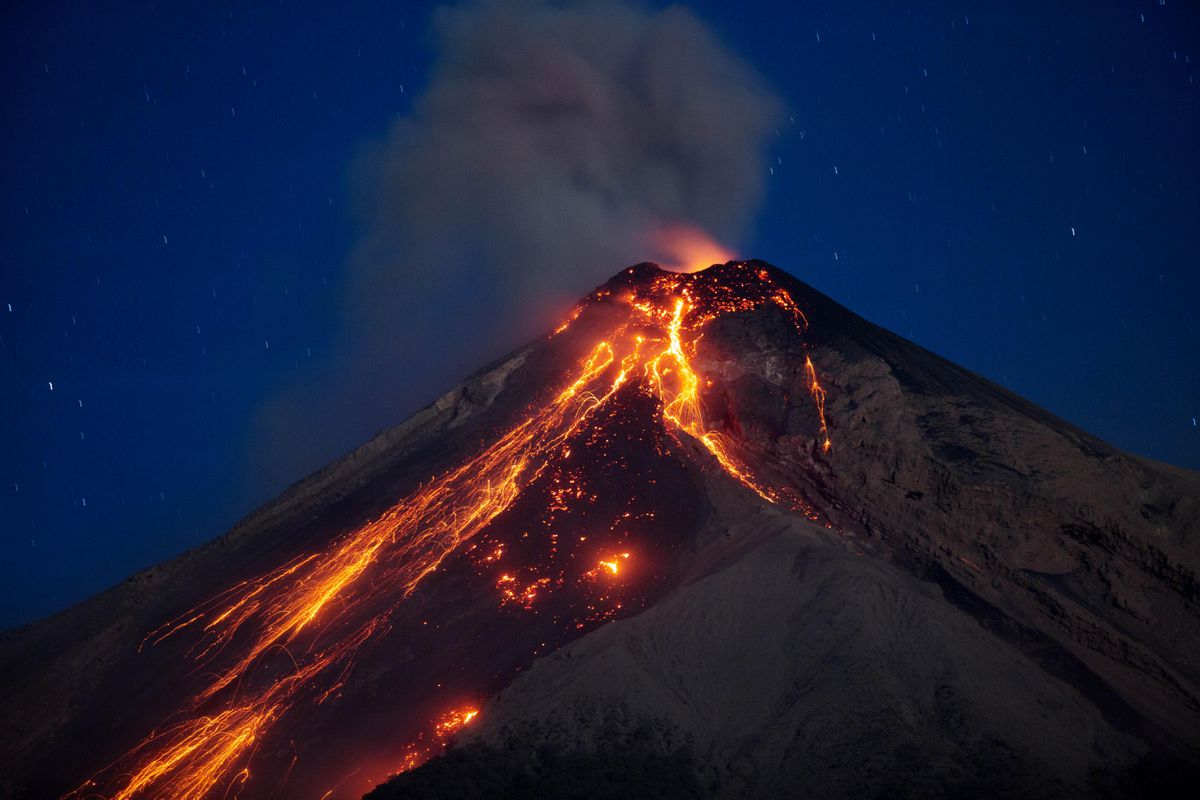Fuego’s fury over Guatemala
June 5, 2018 | Expert Insights

One of Central America's most active volcanos, Volcan de Fuego, erupted in fiery explosions leaving thousands displaced and injured on Sunday.
The death toll has climbed to 69, with rescue operations hampered by pyroclastic flow.
Background
Guatemala’s present is closely linked to the ancient Mayan Civilisation which flourished from 2000BC to 250AD. Under the Spanish conquistador Pedro Alvarado in the 16th century, the indigenous population was subjected to harsh conditions if they managed to survive disease and death. Guatemala received independence in 1851.
The 20th century witnessed a gradual disintegration into a “Banana Republic.” A series of authoritarian governments, supported by the US, allowed foreign companies to exploit labourers and reap extensive benefits. The US-engineered coup of 1951 led to a 36-year long civil war where 100,000 people, mostly indigenous, died or disappeared.
The tropical Central American country, borders Mexico - with many drug routes passing through the forests. Situated within the “Ring of Fire”- string of volcanoes and sites of seismic activity around the edges of the Pacific Ocean - Guatemala is constantly under threat. Fuego spewed a five-mile stream of lava, burying dozens of communities and raining ash on other regions. It was the most violent eruption in over 4 decades. Historical records have documented the volcano's eruptions back to 1531.
Analysis
Citizens who saw the rising plume of grey smoke and ash began running to the hills. President Jimmy Morales has issued a state of emergency in three departments. Thousands of people have been forced to evacuate and move into schools and temporary shelters. Guatemala’s La Aurora International Airport was shut down on Monday owing to the dangers of volcanic ash on turbines.
Fuego unleashed a pyroclastic flow a toxic mix of ash, rock, and volcanic gasses deemed more dangerous than lava. CNN meteorologist said the pyroclastic flow topped 1,000 degrees Celsius. At speeds of over 100 kilometers per hour, even cars are incapable of outrunning it. David Rotary, a volcanologist, believes this flow to be the leading cause of deaths.
Rescue operation workers are facing difficulty with breathing and visibility. While many have been killed, only 69 identities have been confirmed. Excessively burnt bodies will require DNA testing for identification.
Located on the Sierra Madre range of mountains, the country is susceptible to long term damage. The pyroclastic flow will mix with debris and water turning into volcanic mudflows or lahars. The danger of lahars can last for years as fine particles of ash deposited on hillsides during the eruption are carried downstream every time it rains. During rainy season, lahars can sweep downstream with tremendous power, burying entire cities with debris.
Government volcanologist Gustavo Chigna said, "The landscape on the volcano is totally changed, everything is totally destroyed.”
The agriculture dependent nation will take close to a decade to recuperate. Simultaneously, however, minerals from volcanic eruptions will improve soil fertility. Particles emitted into the atmosphere will cool temperatures for months.
Still reeling from the loss of life and property during the civil war, the economically weak country’s public debt will skyrocket. If foreign aid and assistance from USA and Europe is not offered in time, more lives may be lost to this disaster of epic proportions.
Assessment
Our assessment is that the government will have to carry out large scale evacuations, while implementing precautionary measures to protect those who have fled. Schools and buildings in the capital Guatemala City, located about 40 km from Fuego, could be opened as temporary shelters as more citizens evacuate.








Comments